MEDUSA ransomware (virus) - Recovery Instructions Included
MEDUSA virus Removal Guide
What is MEDUSA ransomware?
MEDUSA ransomware encrypts users' personal files and asks for a ransom to be paid
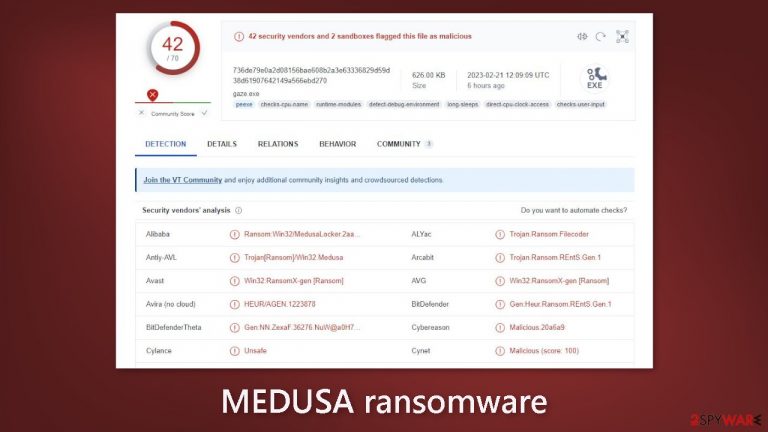
The MEDUSA ransomware virus is a file-locking virus that prevents users from accessing photos, videos, documents, and other personal data. After the malicious program has infiltrated the computer, files are encrypted using complex algorithms. The.MEDUSA extension is used to identify the affected files.
It is usually during this period that victims notice the infection. The file names look something like this – picture.jpg.MEDUSA, video.mp4.MEDUSA, and the icons turn to white pages so thumbnails are unavailable. The malware then creates a text file called !!!READ ME MEDUSA!!!.txt. Ransomware attacks can be catastrophic for those who do not have backups. To avoid this in the future, we recommend that you thoroughly read the guide.
| NAME | MEDUSA |
| TYPE | Ransomware, cryptovirus, data locking malware |
| DISTRIBUTION | Email attachments, peer-to-peer file-sharing platforms, malicious ads |
| FILE EXTENSION | .MEDUSA |
| RANSOM NOTE | !!!READ_ME_MEDUSA!!!.txt |
| FILE RECOVERY | It is almost impossible to recover the files if you do not have backups |
| MALWARE REMOVAL | Scan your machine with anti-malware software to eliminate malicious files. This will not recover your files. |
| SYSTEM FIX | Windows reinstallation can be avoided with FortectIntego maintenance tool, which can fix damaged files |
The ransom note
MEDUSA ransomware creators wrote a note for victims, which reads as follows:
$$\ $$\ $$$$$$$$\ $$$$$$$\ $$\ $$\ $$$$$$\ $$$$$$\
$$$\ $$$ |$$ _____|$$ __$$\ $$ | $$ |$$ __$$\ $$ __$$\
$$$$\ $$$$ |$$ | $$ | $$ |$$ | $$ |$$ / \__|$$ / $$ |
$$\$$\$$ $$ |$$$$$\ $$ | $$ |$$ | $$ |\$$$$$$\ $$$$$$$$ |
$$ \$$$ $$ |$$ __| $$ | $$ |$$ | $$ | \____$$\ $$ __$$ |
$$ |\$ /$$ |$$ | $$ | $$ |$$ | $$ |$$\ $$ |$$ | $$ |
$$ | \_/ $$ |$$$$$$$$\ $$$$$$$ |\$$$$$$ |\$$$$$$ |$$ | $$ |
\__| \__|\________|\_______/ \______/ \______/ \__| \__|
—————————–[ Hello, ******** !!! ]————————–WHAT HAPPEND?
————————————————————
1. We have PENETRATE your network and COPIED data.
* We have penetrated entire network including backup system and researched all about your data.
* And we have extracted all of your important and valuable data and copied them to private cloud storage.2. We have ENCRYPTED your files.
While you are reading this message, it means all of your files and data has been ENCRYPTED by world's strongest ransomware.
All files have encrypted with new military-grade encryption algorithm and you can not decrypt your files.
But don't worry, we can decrypt your files.There is only one possible way to get back your computers and servers – CONTACT us via LIVE CHAT and pay for the special
MEDUSA DECRYPTOR and DECRYPTION KEYs.
This MEDUSA DECRYPTOR will restore your entire network, This will take less than 1 business day.WHAT GUARANTEES?
—————————————————————
We can post your data to the public and send emails to your customers.
We have professional OSINTs and media team for leak data to telegram, facebook, twitter channels and top news websites.You can suffer significant problems due disastrous consequences, leading to loss of valuable intellectual property and other sensitive information,
costly incident response efforts, information misuse/abuse, loss of customer trust, brand and reputational damage, legal and regulatory issues.–
–
–After paying for the data breach and decryption, we guarantee that your data will never be leaked and this is also for our reputation.
YOU should be AWARE!
—————————————————————
We will speak only with an authorized person. It can be the CEO, top management, etc.
In case you ar not such a person – DON'T CONTACT US! Your decisions and action can result in serious harm to your company!
Inform your supervisors and stay calm!If you do not contact us within 3 days, We will start publish your case to our official blog and everybody will start notice your incident!
——————–[ Official blog tor address ]——————–
Using TOR Browser(hxxps://www.torproject.org/download/):–
CONTACT US!
———————-[ Your company live chat address ]—————————
Using TOR Browser(hxxps://www.torproject.org/download/):–
Or Use Tox Chat Program(hxxps://qtox.github.io/)
Add user with our tox ID : 4AE245548F2A225882951FB14E9BF87E E01A0C10AE159B99D1EA62620D91A372205227254A9FOur support email: ( medusa.serviceteam@protonmail.com )
Company identification hash:
–
The cybercriminal demands that the victim pay for the “MEDUSA DECRYPTOR,” a special decryption tool and decryption keys, in order to restore their entire network. If the ransom is not paid within three days, the cybercriminal threatens to publish the victim's data and send emails to their customers. They claim to have a professional OSINTs and media team that will leak the data to channels on Telegram, Facebook, Twitter, and top news websites.
For several reasons, victims should not pay the ransom. For starters, there is no guarantee that the cybercriminal will follow through on their promise to provide the decryption tool and keys once the ransom is paid. Second, paying the ransom only encourages and funds the criminal activity, potentially leading to additional attacks in the future. Third, even if the victim pays the ransom, the cybercriminal may still use their data maliciously, as there is no guarantee that the cybercriminal will delete or not distribute the data after payment.
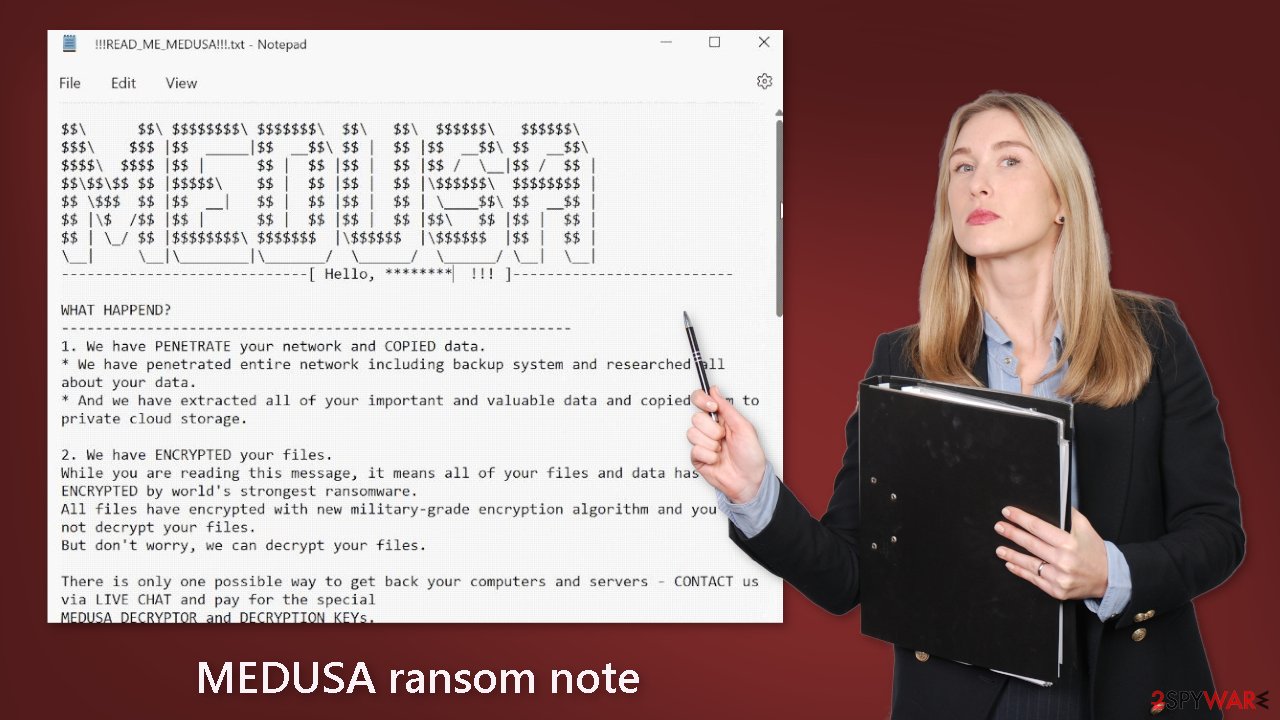
Distribution methods
To spread malicious programs, cybercriminals use email attachments, fake software updates, unofficial sites that distribute “cracked” programs,[1] and peer-to-peer file-sharing platforms. When downloading email attachments, you should always proceed with caution. Do not open attachments from senders you do not know.
Fake software updaters infect computers by replacing updates with malware. Never update software via your browser. If a page appears informing you that you need to update something, go to the software's official website or open the program and check. Never ever download anything from a random pop-up window.
Software vulnerabilities[2] are another common method used by threat actors to deliver ransomware. It is critical to keep your operating system and software up to date. Security patches that address known vulnerabilities are released on a regular basis by software developers. Install them as soon as they become available to avoid hackers exploiting security flaws.
Ransomware removal
If you try to recover your data first, it can result in permanent loss. It can also encrypt your files the second time. It will not stop until you remove the malicious files causing it first. You should not attempt to remove the malicious program yourself. Use anti-malware tools like SpyHunter 5Combo Cleaner or Malwarebytes to scan your system.
This security software should find all the related files and entries and remove them automatically for you. Automatic removal is the best option because there is less risk of leaving some of the traces behind. Malware could prevent you from using antivirus software by turning it off. In that case, you should proceed with accessing Safe Mode first:
Windows 7 / Vista / XP
- Click Start > Shutdown > Restart > OK.
- When your computer becomes active, start pressing F8 button (if that does not work, try F2, F12, Del, etc. – it all depends on your motherboard model) multiple times until you see the Advanced Boot Options window.
- Select Safe Mode with Networking from the list.
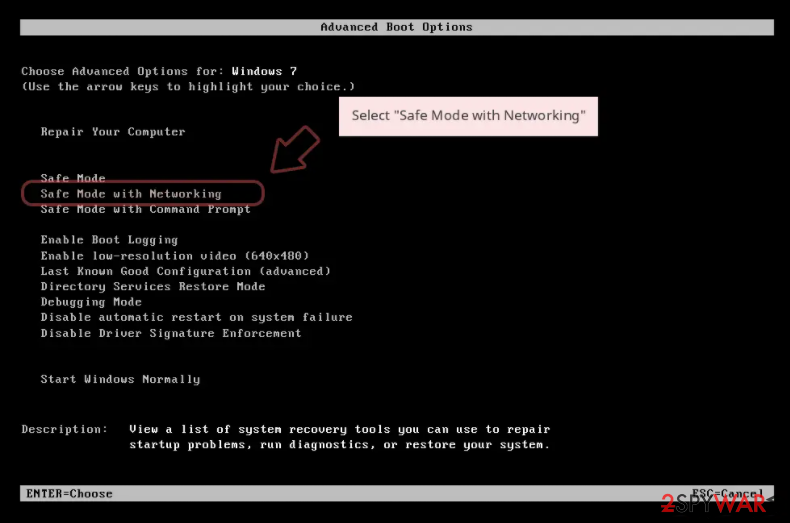
Windows 10 / Windows 8
- Right-click on Start button and select Settings.
- Scroll down to pick Update & Security.
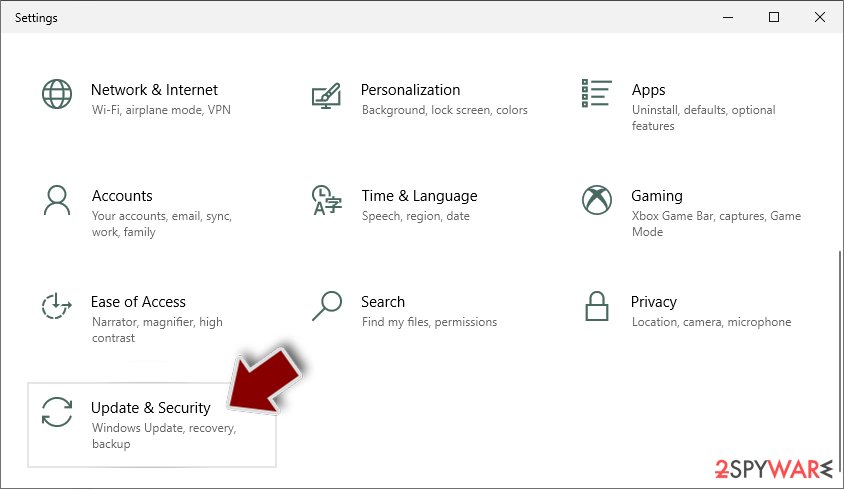
- On the left side of the window, pick Recovery.
- Now scroll down to find Advanced Startup section.
- Click Restart now.

- Select Troubleshoot.
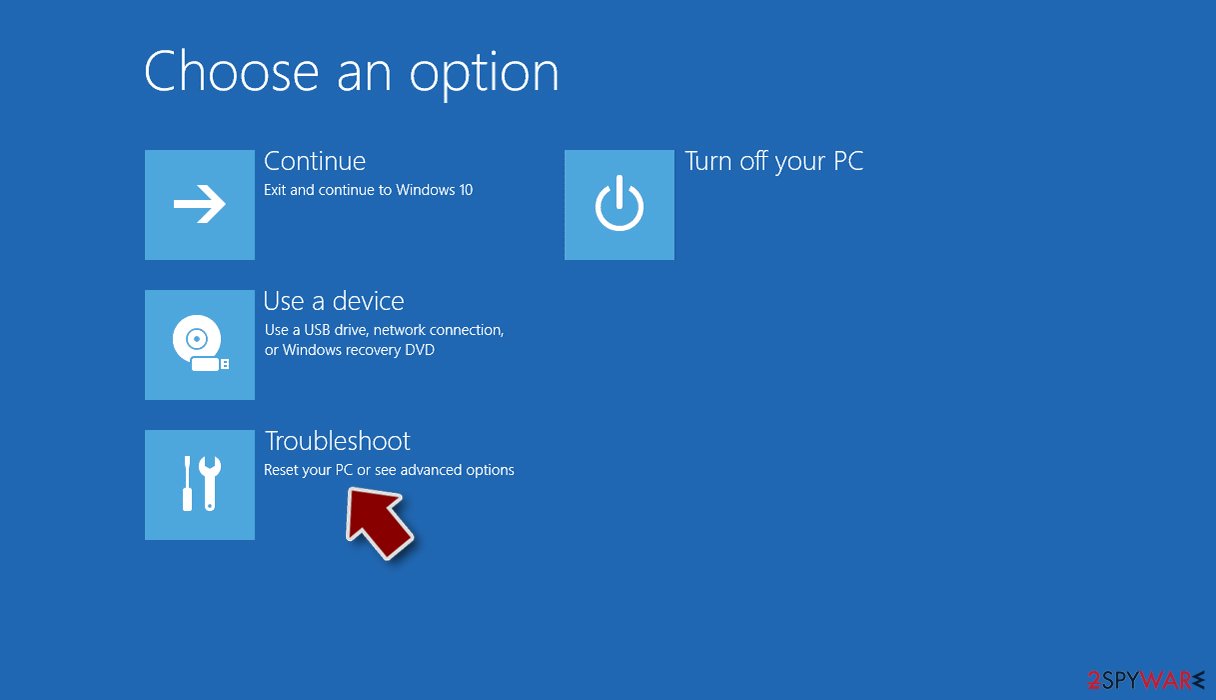
- Go to Advanced options.
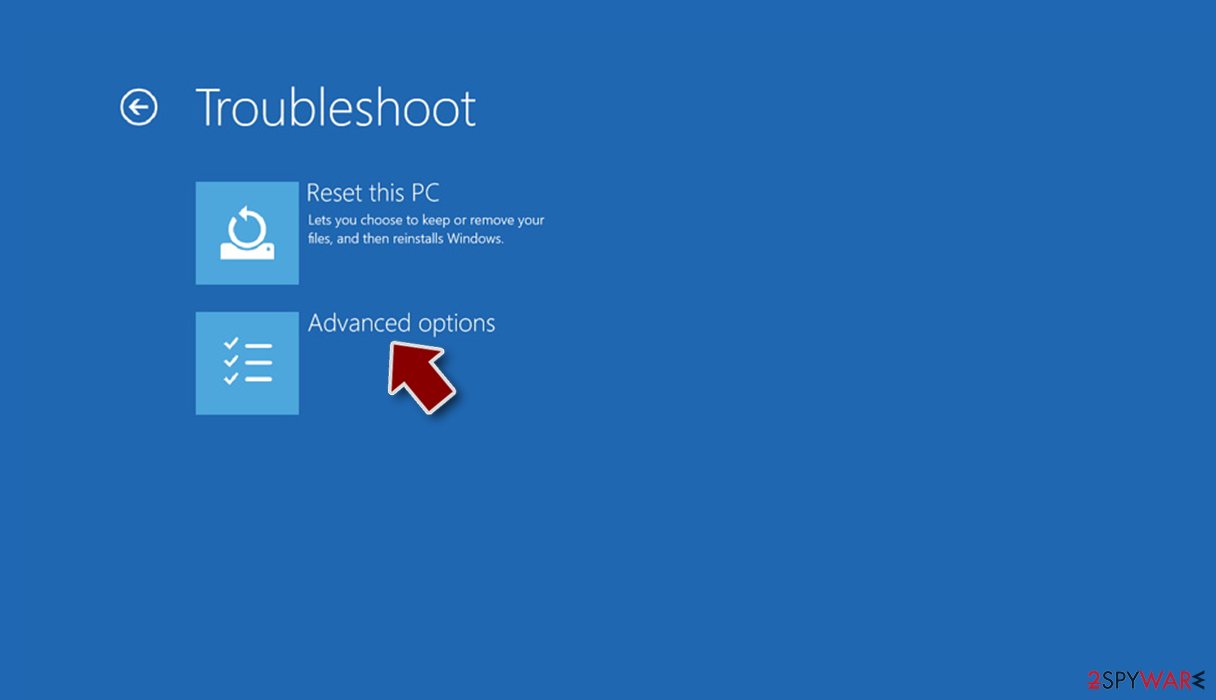
- Select Startup Settings.
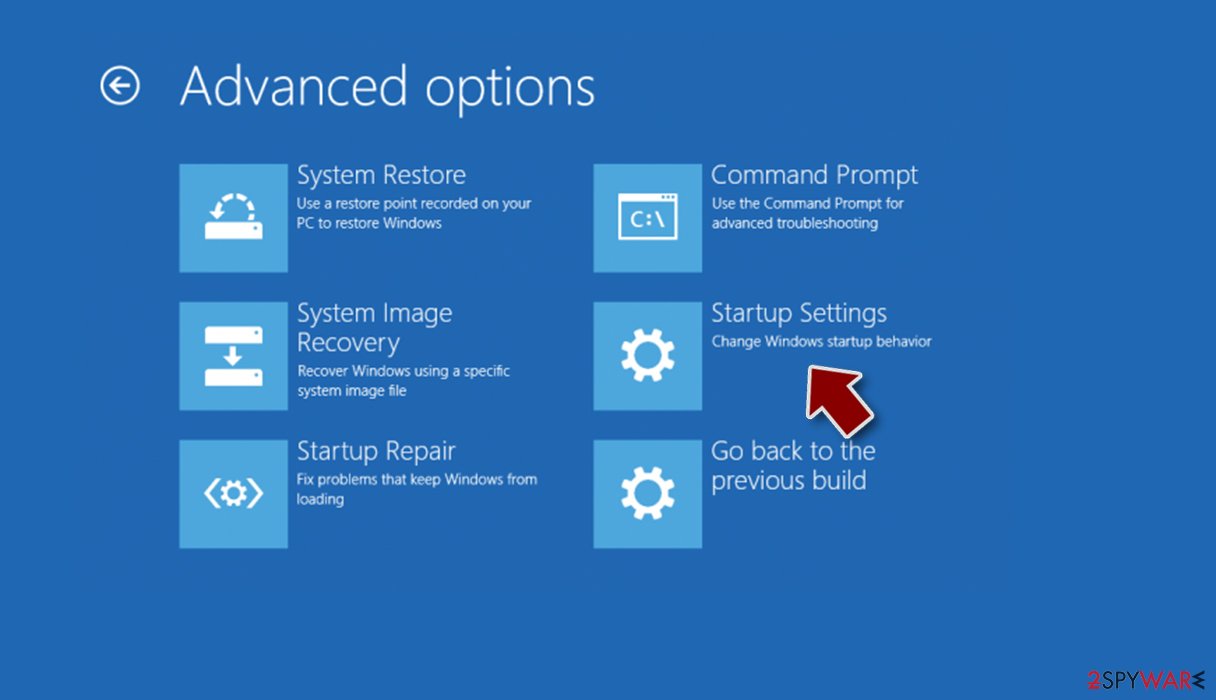
- Click Restart.
- Press 5 or click 5) Enable Safe Mode with Networking.
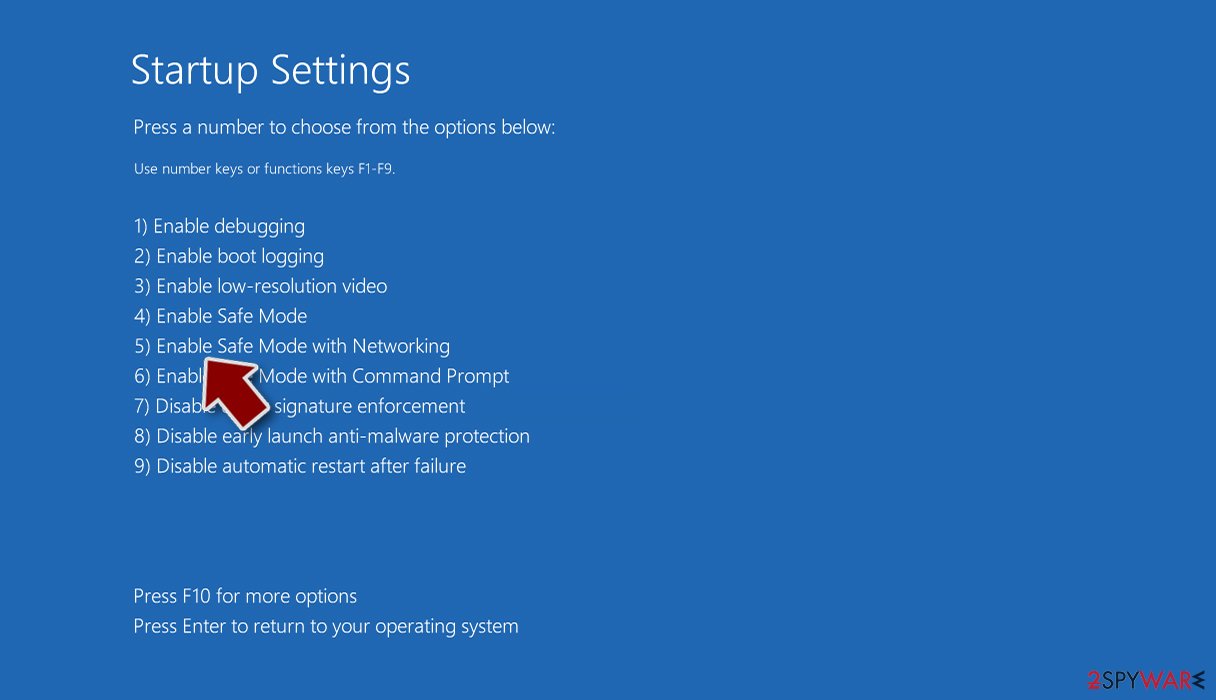
File recovery using third-party software
Only hackers hold the decryption key, which can unlock your files, so if you did not back them up previously, you possibly lost your files forever. You can try using data recovery software, but third-party programs cannot always decrypt the files. We suggest at least trying this method. Before proceeding, you have to copy the corrupted files and place them in a USB flash drive or another storage. And remember – only do this if you have already removed MEDUSA ransomware.
- Download Data Recovery Pro.
- Double-click the installer to launch it.

- Follow on-screen instructions to install the software.
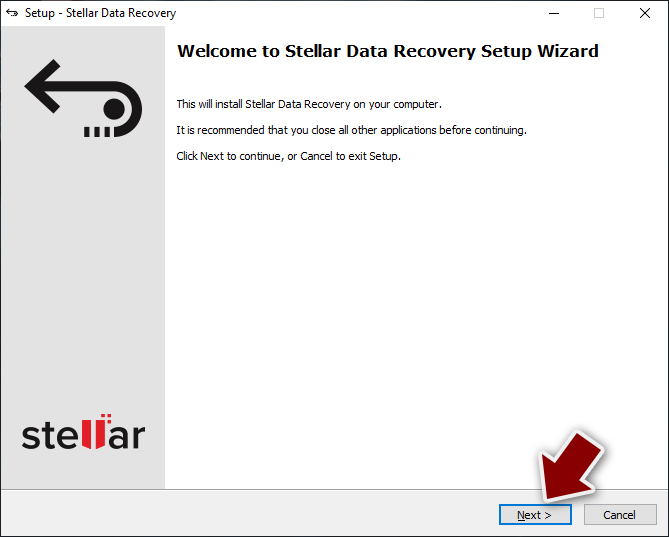
- As soon as you press Finish, you can use the app.
- Select Everything or pick individual folders where you want the files to be recovered from.
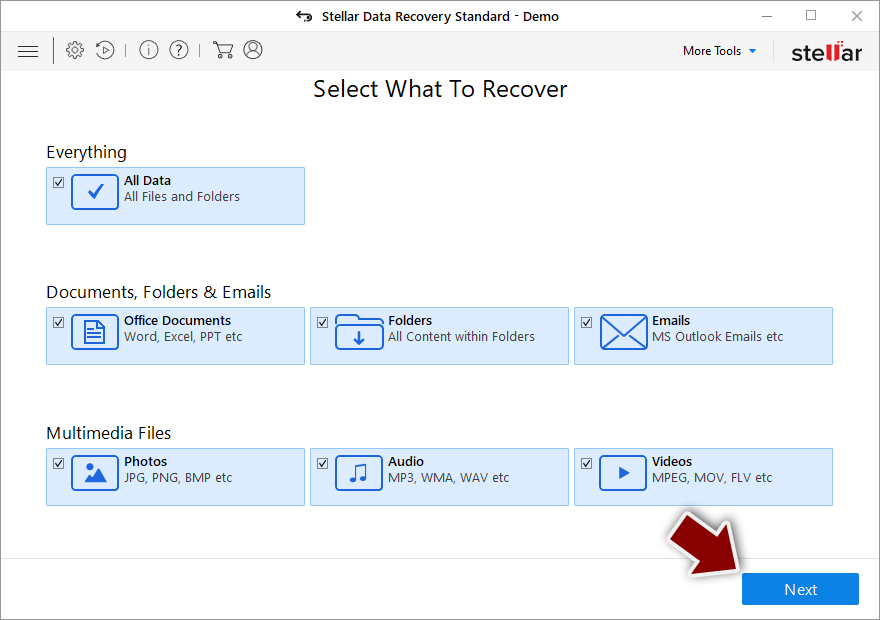
- Press Next.
- At the bottom, enable Deep scan and pick which Disks you want to be scanned.
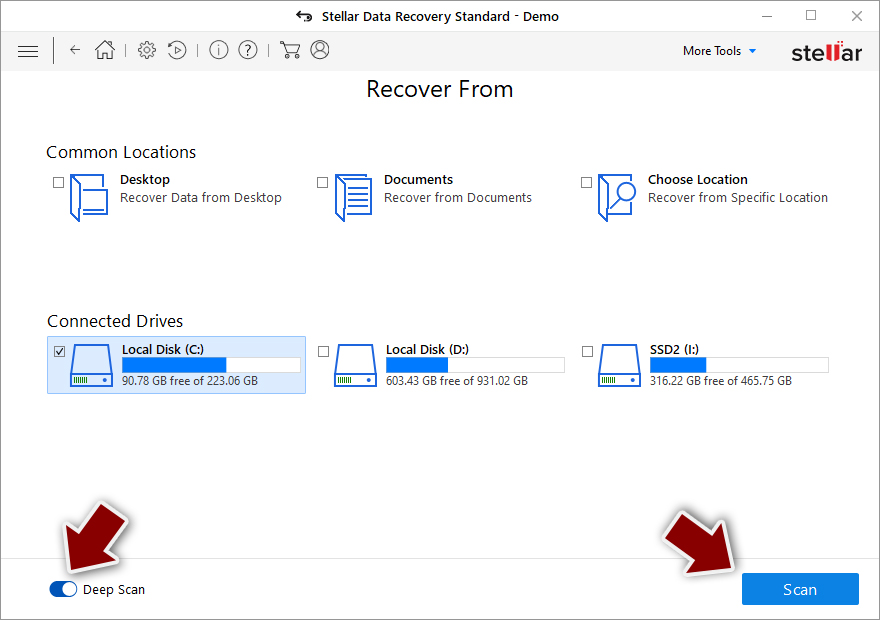
- Press Scan and wait till it is complete.
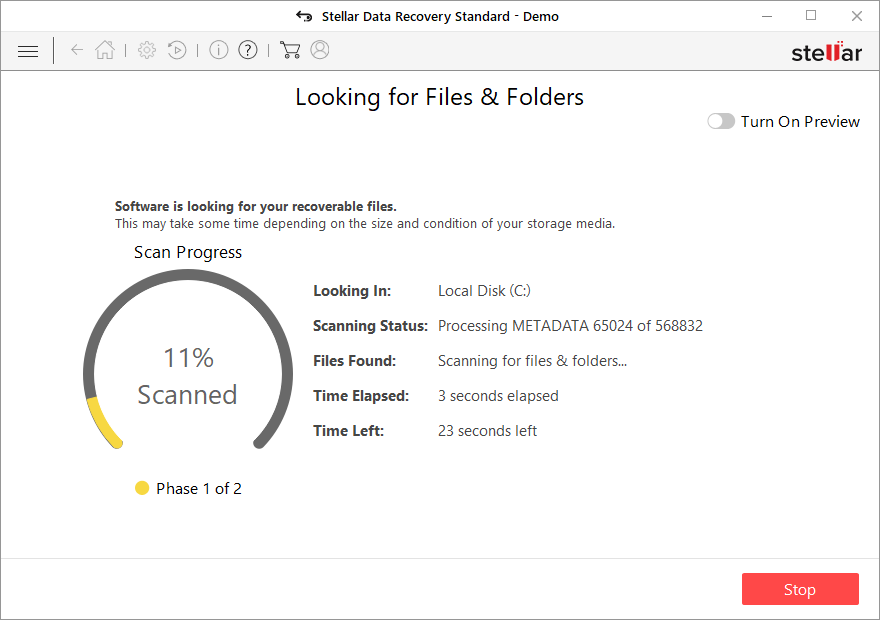
- You can now pick which folders/files to recover – don't forget you also have the option to search by the file name!
- Press Recover to retrieve your files.
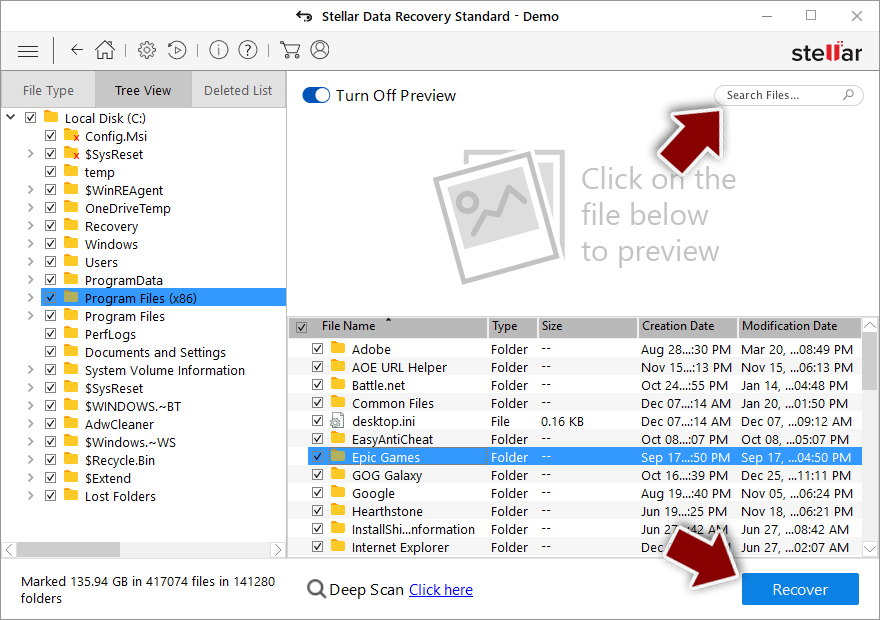
Fix the operating system
Performance, stability, and usability issues, to the point where a full Windows reinstall is required, are expected after a malware infection. These types of infections can alter the Windows registry database, damage vital bootup, and other sections, delete or corrupt DLL files, etc. Once a system file is damaged by malware, antivirus software is not able to repair it.
This is why FortectIntego was developed. It can fix a lot of the damage caused by an infection like this. Blue Screen errors,[3] freezes, registry errors, damaged DLLs, etc., can make your computer completely unusable. By using this maintenance tool, you could avoid Windows reinstallation.
- Download the application by clicking on the link above
- Click on the ReimageRepair.exe

- If User Account Control (UAC) shows up, select Yes
- Press Install and wait till the program finishes the installation process
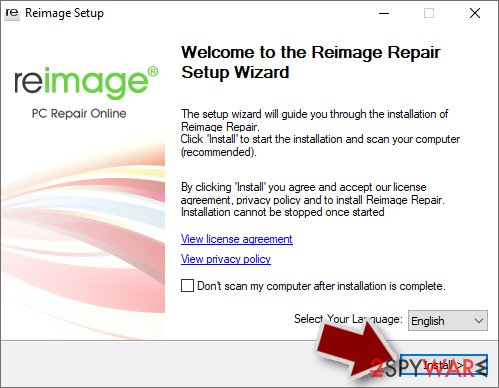
- The analysis of your machine will begin immediately
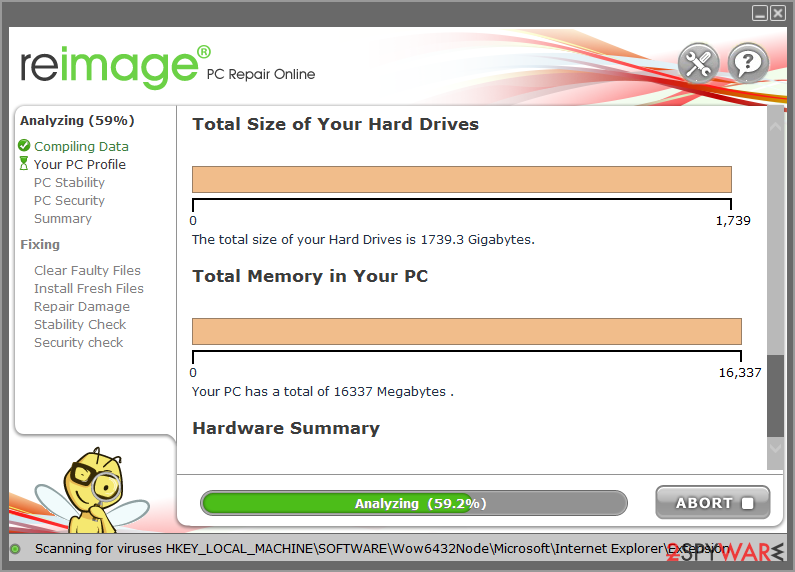
- Once complete, check the results – they will be listed in the Summary
- You can now click on each of the issues and fix them manually
- If you see many problems that you find difficult to fix, we recommend you purchase the license and fix them automatically.
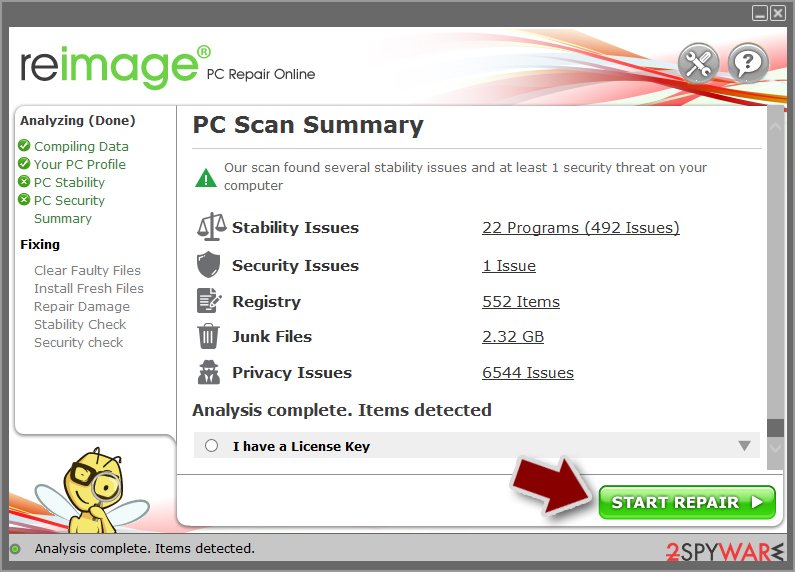
Getting rid of MEDUSA virus. Follow these steps
Isolate the infected computer
Some ransomware strains aim to infect not only one computer but hijack the entire network. As soon as one of the machines is infected, malware can spread via network and encrypt files everywhere else, including Network Attached Storage (NAS) devices. If your computer is connected to a network, it is important to isolate it to prevent re-infection after ransomware removal is complete.
The easiest way to disconnect a PC from everything is simply to plug out the ethernet cable. However, in the corporate environment, this might be extremely difficult to do (also would take a long time). The method below will disconnect from all the networks, including local and the internet, isolating each of the machines involved.
- Type in Control Panel in Windows search and press Enter
- Go to Network and Internet
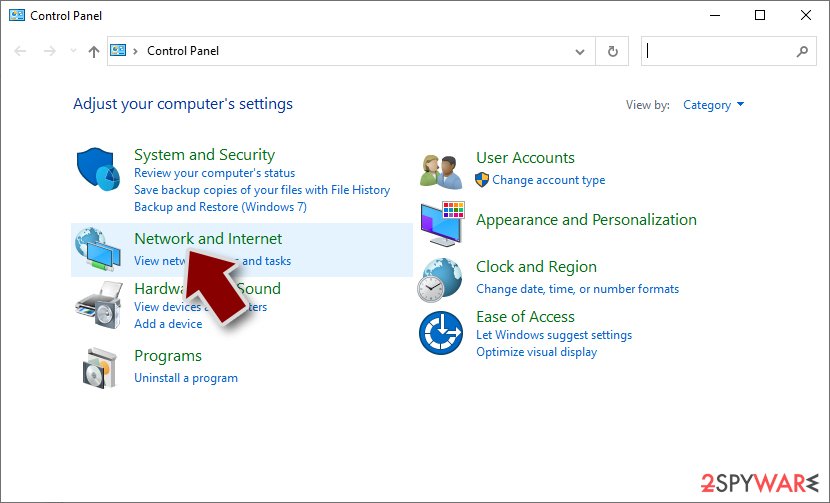
- Click Network and Sharing Center
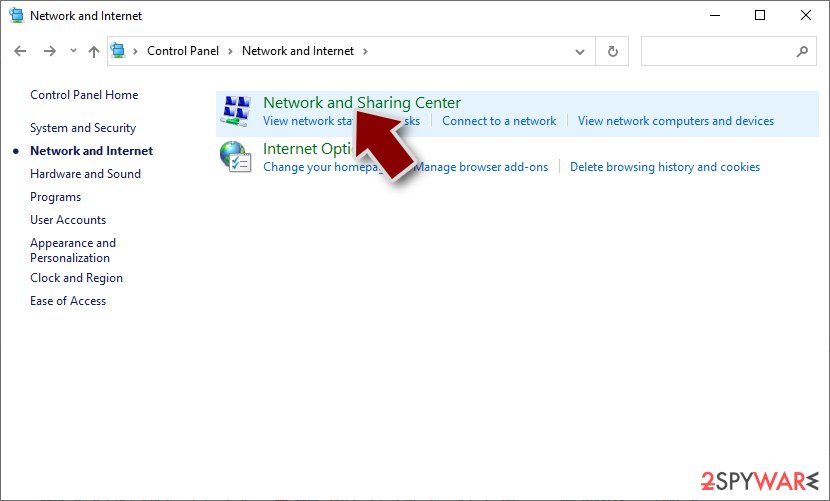
- On the left, pick Change adapter settings
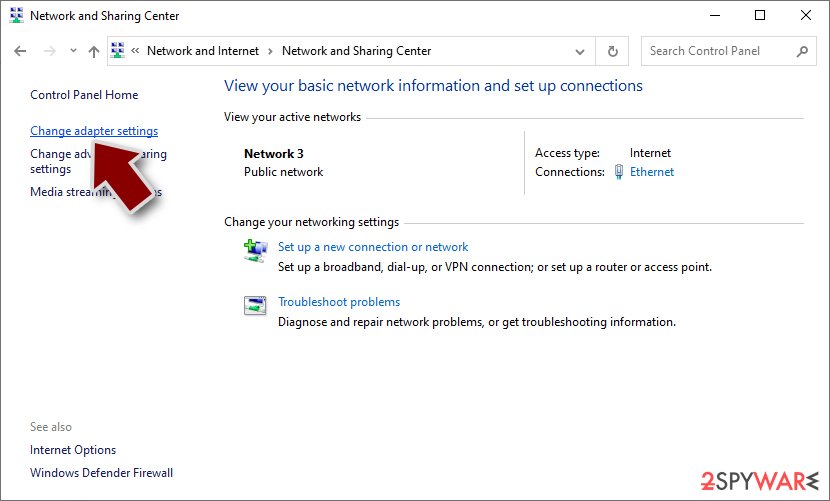
- Right-click on your connection (for example, Ethernet), and select Disable
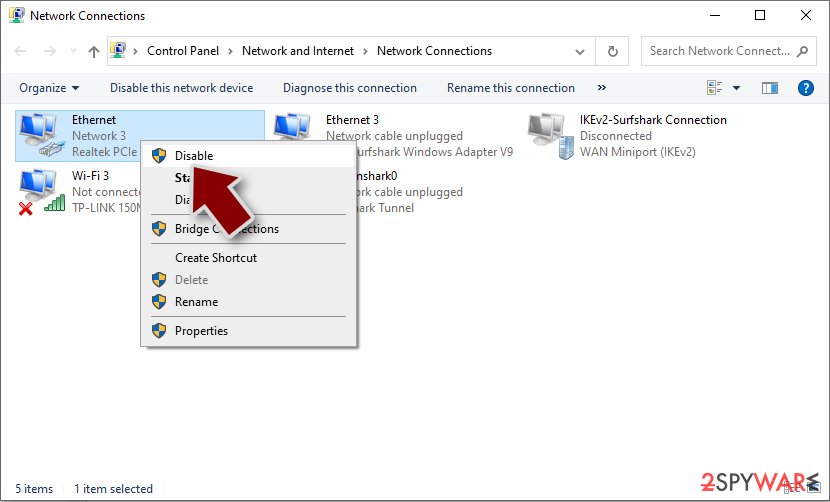
- Confirm with Yes.
If you are using some type of cloud storage you are connected to, you should disconnect from it immediately. It is also advisable to disconnect all the external devices, such as USB flash sticks, external HDDs, etc. Once the malware elimination process is finished, you can connect your computers to the network and internet, as explained above, but by pressing Enable instead.
Report the incident to your local authorities
Ransomware is a huge business that is highly illegal, and authorities are very involved in catching malware operators. To have increased chances of identifying the culprits, the agencies need information. Therefore, by reporting the crime, you could help with stopping the cybercriminal activities and catching the threat actors. Make sure you include all the possible details, including how did you notice the attack, when it happened, etc. Additionally, providing documents such as ransom notes, examples of encrypted files, or malware executables would also be beneficial.
Law enforcement agencies typically deal with online fraud and cybercrime, although it depends on where you live. Here is the list of local authority groups that handle incidents like ransomware attacks, sorted by country:
- USA – Internet Crime Complaint Center IC3
- United Kingdom – ActionFraud
- Canada – Canadian Anti-Fraud Centre
- Australia – ScamWatch
- New Zealand – ConsumerProtection
- Germany – Polizei
- France – Ministère de l'Intérieur
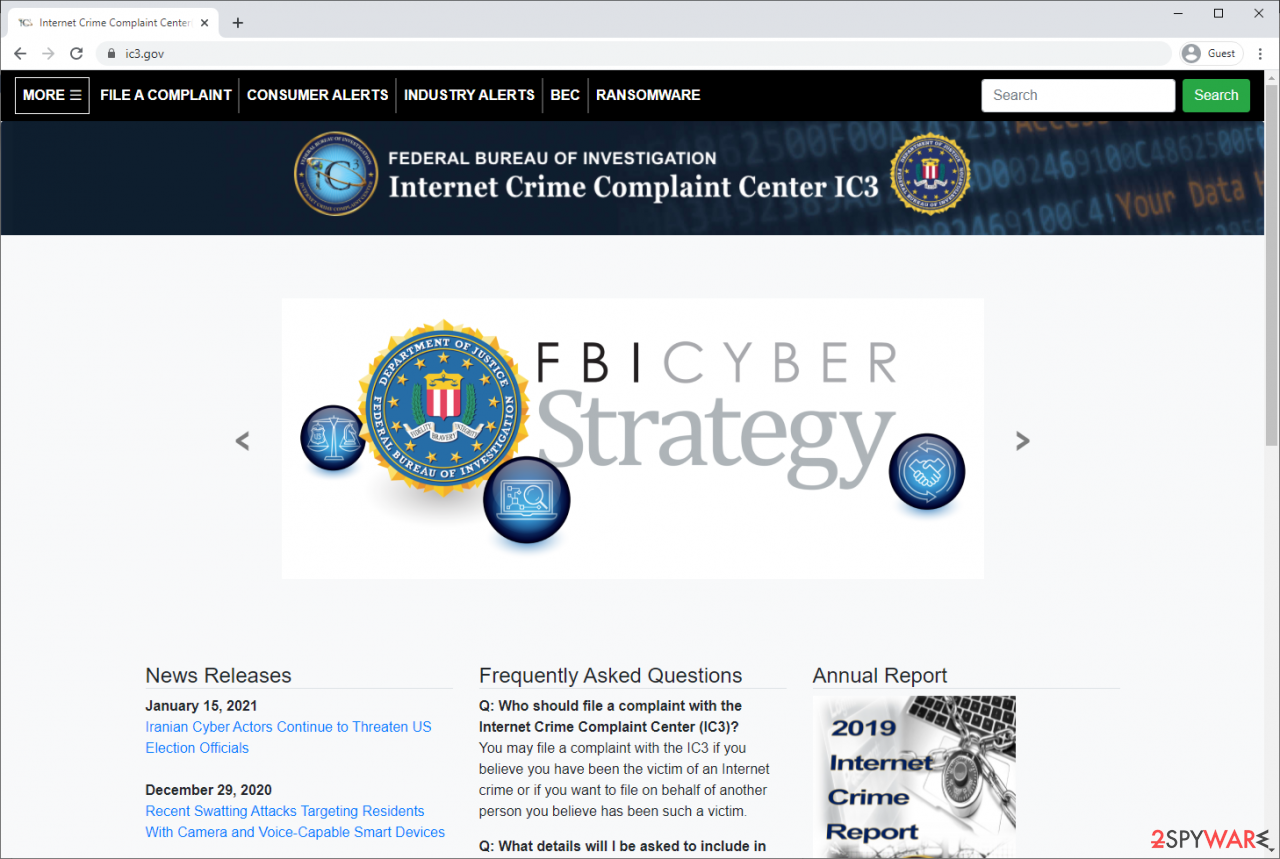
If your country is not listed above, you should contact the local police department or communications center.
How to prevent from getting ransomware
Stream videos without limitations, no matter where you are
There are multiple parties that could find out almost anything about you by checking your online activity. While this is highly unlikely, advertisers and tech companies are constantly tracking you online. The first step to privacy should be a secure browser that focuses on tracker reduction to a minimum.
Even if you employ a secure browser, you will not be able to access websites that are restricted due to local government laws or other reasons. In other words, you may not be able to stream Disney+ or US-based Netflix in some countries. To bypass these restrictions, you can employ a powerful Private Internet Access VPN, which provides dedicated servers for torrenting and streaming, not slowing you down in the process.
Data backups are important – recover your lost files
Ransomware is one of the biggest threats to personal data. Once it is executed on a machine, it launches a sophisticated encryption algorithm that locks all your files, although it does not destroy them. The most common misconception is that anti-malware software can return files to their previous states. This is not true, however, and data remains locked after the malicious payload is deleted.
While regular data backups are the only secure method to recover your files after a ransomware attack, tools such as Data Recovery Pro can also be effective and restore at least some of your lost data.
- ^ Georgina Torbet. 5 Security Reasons Not to Download Cracked Software. Makeuseof. Lifestyle Magazine.
- ^ Danny Palmer. The 25 most dangerous software vulnerabilities to watch out for. Zdnet. Computer Security.
- ^ Blue screen of death. Wikipedia, the free encyclopedia.
